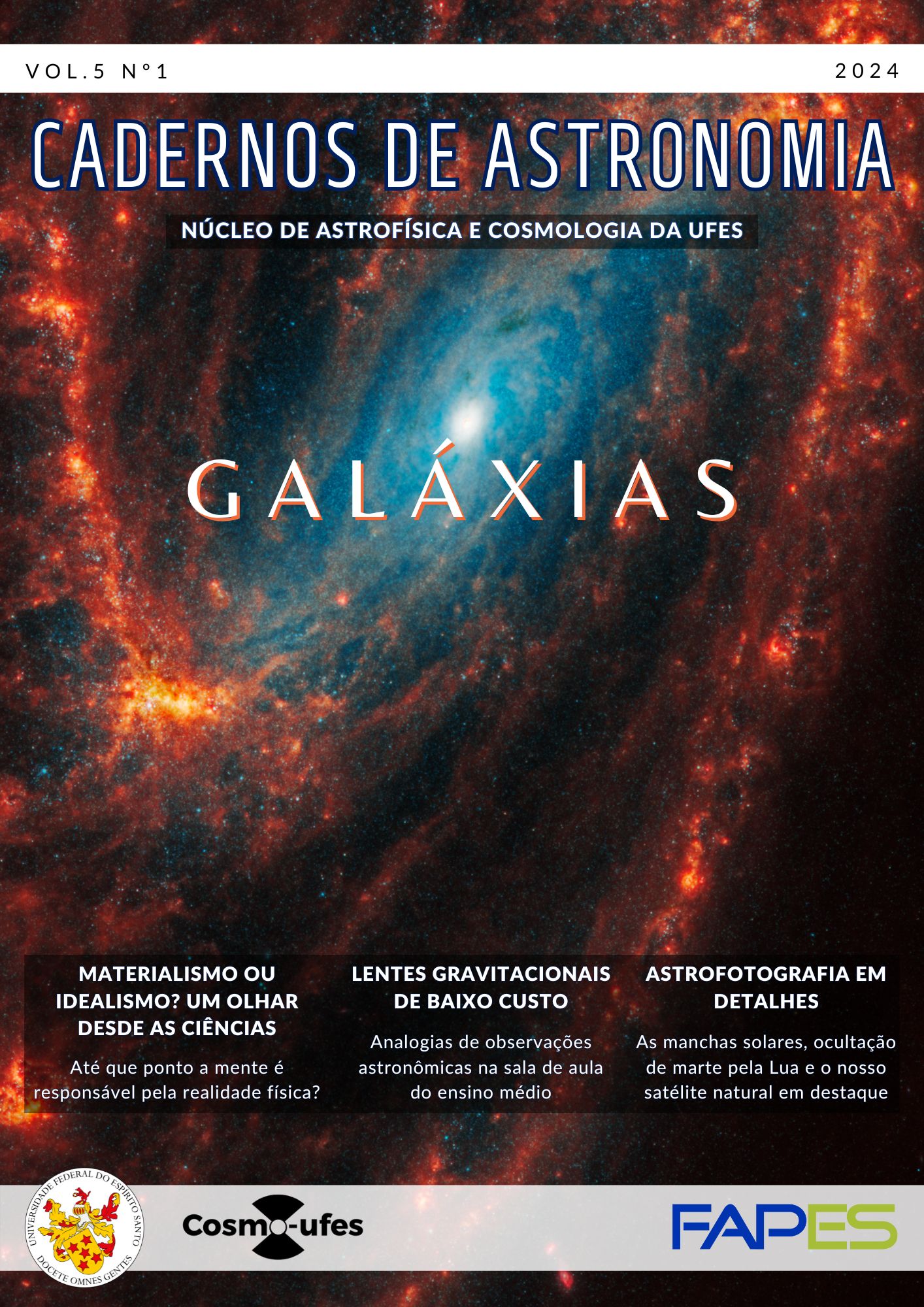Lua, gigante cósmico! A Lua mais próxima da Terra (perigeu) e o Sol mais distante (afélio da Terra)
DOI:
https://doi.org/10.47456/Cad.Astro.v5n1.43582Palavras-chave:
Lua, perigeu lunar, afélio da TerraResumo
O artigo explora a relação entre o Sol e a Lua, apesar de suas distâncias e tamanhos diferentes. Destaca as órbitas elípticas que causam variações nos tamanhos aparentes desses astros, levando a eventos como eclipses. Em julho de 2023, houve a coincidência de a Terra estar mais distante do Sol e a Lua mais próxima, resultando em um tamanho aparente lunar maior. O estudo destaca características físicas e orbitais para compreender tais fenômenos astronômicos.
Referências
[1] K. de Souza Oliveira Filho e M. de Fátima Oliveira Saraiva, Astronomia e astrofísica (Livraria da Física, São Paulo, 2014).
[2] M. Barboni et al., Early formation of the Moon 4.51 billion years ago, Science Advances 3(1) (2017).
[3] G. Afonso, O céu dos índios do Brasil, in Anais da 66a Reunião Anual da SBPC (2014). Disponível em https://www.sbpcnet.org.br/livro/ 66ra/PDFs/arq_1506_1176.pdf, acesso em fev. 2024.
[4] S. Ryan e A. Norton, Stellar Evolution and Nucleosynthesis (Cambridge University Press, 2010).
[5] E. Echer et al., O número de manchas solares, índice da atividade do sol, Revista Brasileira de Ensino de Física 25(2), 157 (2003).
Downloads
Publicado
Edição
Seção
Licença
Copyright (c) 2024 Luiz Ravell Andre Antonio Dias, Ricardo José Vaz Tolentino

Este trabalho está licenciado sob uma licença Creative Commons Attribution 4.0 International License.






